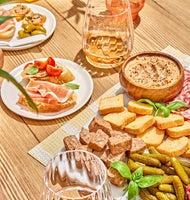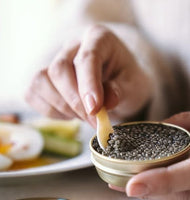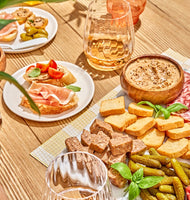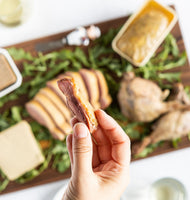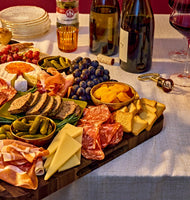
A Comprehensive Guide to Charcuterie: History, Varieties, and Presentation
Charcuterie is a French term that refers to the art of curing and preserving meat. It has been around for centuries and has gained immense popularity worldwide in recent years. In this comprehensive guide, we will take a closer look at charcuterie, its history, varieties, and presentation.
History of Charcuterie
Charcuterie has been a part of French cuisine for centuries. It was originally created as a way to preserve meat, especially during the winter months when fresh meat was scarce. The process of curing meat involves adding salt, sugar, and other spices to the meat, which helps to draw out the moisture and inhibit the growth of bacteria. The resulting product can be stored for a long time without spoiling, making it a convenient way to store and transport meat.
Varieties of Charcuterie
There are many different types of charcuterie, each with its own unique flavor and texture. Some of the most popular varieties include:
-
Salami - a type of sausage that is typically made from beef or pork and is cured with salt and spices.
-
Prosciutto - a type of dry-cured ham that is typically sliced thinly and served with crackers or bread.
-
Pâté - a spread made from ground meat, usually liver, and seasoned with spices and herbs.
-
Terrine - a type of pâté that is cooked in a loaf pan and typically contains a combination of meats, vegetables, and herbs.
Presentation of Charcuterie
Charcuterie boards have become a popular way to serve charcuterie, especially for entertaining. The key to a great charcuterie board is to have a variety of meats, cheeses, fruits, and nuts that complement each other. The board should also be visually appealing, with different colors and textures that create a visually appealing spread. Here are some tips for creating the perfect charcuterie board:
-
Choose a variety of meats, including salami, prosciutto, and pâté.
-
Add a variety of cheeses, including hard and soft cheeses.
-
Include fresh and dried fruits, such as grapes, figs, and apricots.
-
Add nuts, such as almonds, walnuts, and pistachios.
-
Don't forget the crackers and toasts or bread, which serve as the base for the charcuterie.
Charcuterie is a delicious and versatile food that has a rich history and is enjoyed worldwide. By following the tips and suggestions outlined in this guide, you can create a beautiful and delicious charcuterie board that is sure to impress your guests. Remember to choose a variety of meats, cheeses, fruits, and nuts that complement each other, and to arrange them in a visually appealing way. With a little creativity and some practice, you can become a charcuterie expert in no time!

